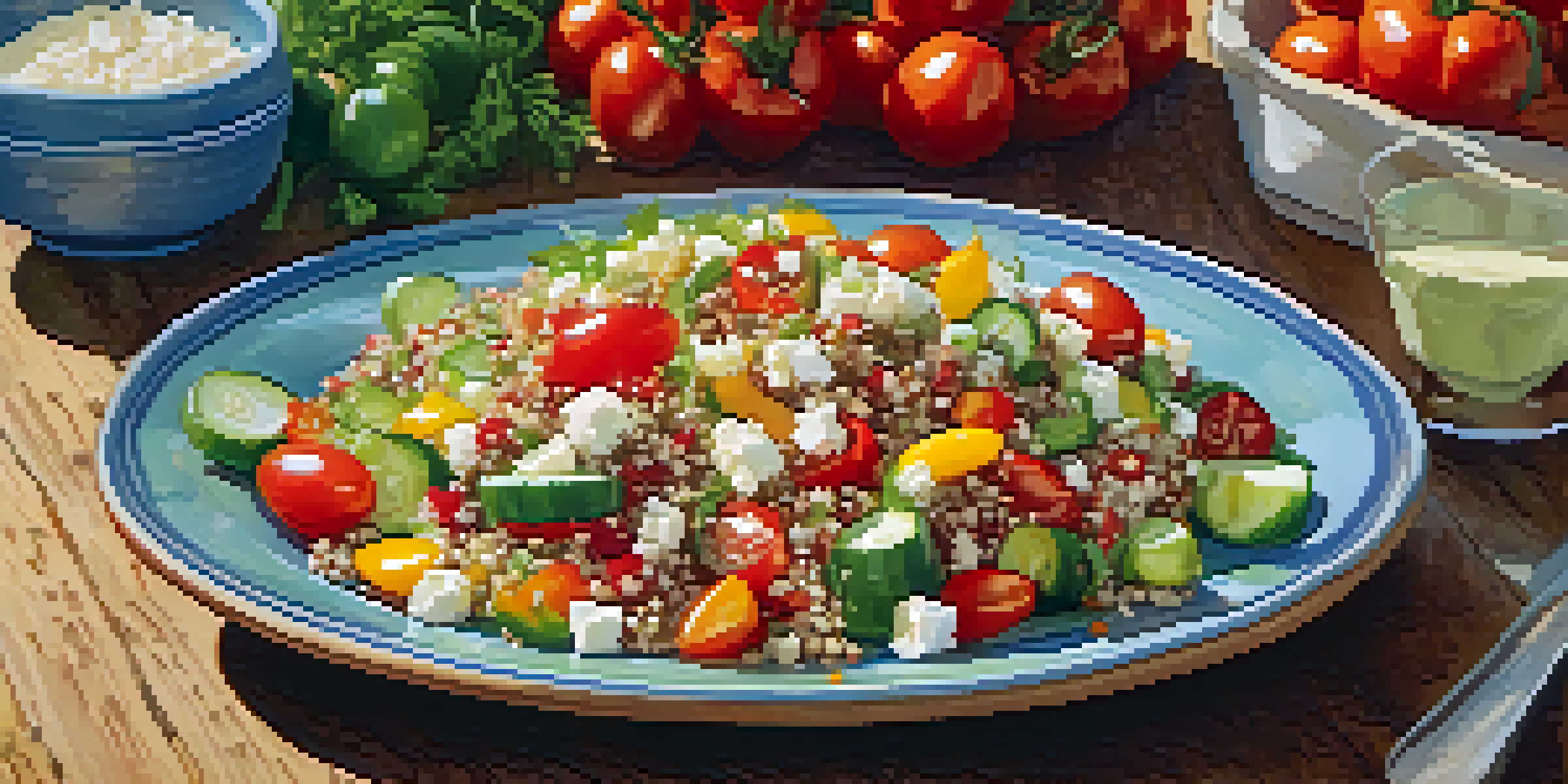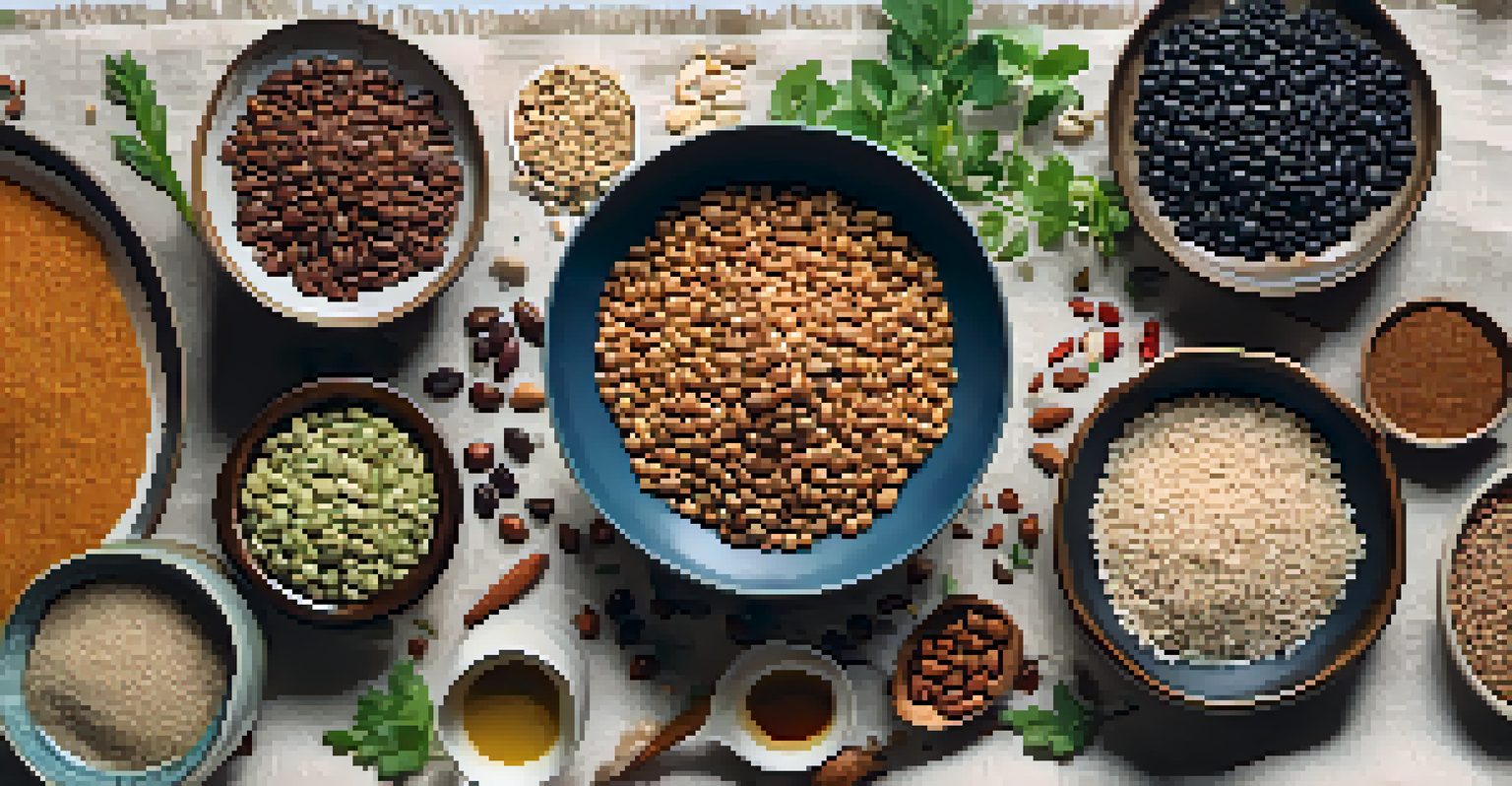Understanding Complete vs. Incomplete Proteins in Plants

What Are Proteins and Why Do We Need Them?
Proteins are essential macromolecules that play a critical role in various bodily functions. They are made up of smaller units called amino acids, which are the building blocks of life. Our bodies require proteins for growth, repair, and maintenance of tissues, making them vital for overall health.
Proteins are the building blocks of life.
Amino acids come in two types: essential and non-essential. Essential amino acids cannot be produced by the body and must be obtained from food. This is where understanding complete and incomplete proteins becomes important, as they differ in their amino acid profiles.
Related Resource
When we consume protein-rich foods, our bodies break them down into amino acids, which are then used to build new proteins. A balanced intake of protein ensures that we receive all the necessary amino acids our bodies need to function optimally.
Defining Complete Proteins: The Full Package
Complete proteins contain all nine essential amino acids in sufficient quantities, making them a perfect source of nutrition. Common sources of complete proteins include animal products like meat, fish, eggs, and dairy. However, some plant-based foods can also be complete proteins, such as quinoa and soy products.

The presence of all essential amino acids means that complete proteins can support muscle repair, hormone production, and immune function. This is especially important for individuals who engage in regular physical activity or have specific dietary needs.
Understanding Protein Types
Proteins are categorized as complete or incomplete based on their amino acid profiles, which is essential for meeting nutritional needs.
Incorporating complete proteins into your diet can help ensure you’re meeting your nutritional requirements. This is particularly beneficial for vegetarians and vegans who may need to be more mindful about their protein sources.
Exploring Incomplete Proteins: Missing Pieces
Incomplete proteins, on the other hand, lack one or more essential amino acids. Most plant-based proteins fall into this category, including beans, lentils, nuts, and grains. While these foods provide valuable nutrients, they don't offer the full amino acid profile our bodies need.
You are what you eat, so don't be fast, cheap, easy, or fake.
It's important to note that just because a protein is incomplete doesn't mean it's not beneficial. Many plant foods are rich in vitamins, minerals, and fiber, contributing to overall health. However, relying solely on incomplete proteins can lead to deficiencies if not combined with other sources.
Related Resource
For those on a plant-based diet, understanding the concept of incomplete proteins is key. By combining different protein sources, such as rice and beans, you can create a complete amino acid profile, ensuring your body gets everything it needs.
Combining Incomplete Proteins for Balance
One effective strategy for vegetarians and vegans is to combine different plant foods to create a complete protein. This is often referred to as protein complementation. For example, pairing a grain like rice with legumes like beans can provide all essential amino acids.
Another popular combination is peanut butter on whole-grain bread, which offers a balanced amino acid profile. Understanding how to mix and match foods can simplify meal planning while ensuring you receive adequate protein.
Combining Plant Proteins
By combining different plant-based foods, such as grains and legumes, individuals can create complete proteins that provide all essential amino acids.
This approach allows you to enjoy a varied diet and still meet your nutritional needs. It also opens up a world of culinary creativity, as you explore different combinations of plant foods.
The Importance of Variety in Plant-Based Diets
Incorporating a wide variety of foods into your diet ensures that you receive all necessary nutrients, including proteins. Relying on only a few sources can lead to nutritional gaps, particularly for those following a plant-based diet. Variety not only enhances flavor but also boosts the range of nutrients.
Different plant foods offer unique sets of amino acids and other nutrients. For instance, while legumes might be low in methionine, grains like rice or wheat can compensate for that deficiency. This balance is crucial for maintaining overall health.
Related Resource
Moreover, eating a diverse diet can prevent food boredom, making meals more enjoyable. As you experiment with different combinations, you can discover new favorites while maximizing your nutrient intake.
Nutritional Considerations for Athletes and Active Individuals
For athletes and those with active lifestyles, protein intake becomes even more critical. Engaging in physical activity increases the body's demand for proteins, as they are essential for muscle recovery and growth. Understanding the difference between complete and incomplete proteins can help in meal planning.
Active individuals should aim to include both complete and incomplete protein sources in their diets. This combination ensures that they're not only fueling their bodies adequately but also recovering effectively after workouts.
Importance for Active Lifestyles
Athletes and active individuals should prioritize both complete and incomplete protein sources to support muscle recovery and overall health.
Incorporating snacks like hummus with whole-grain crackers or a smoothie with plant-based protein can be an excellent way to meet protein needs throughout the day. These choices are not only nutritious but also convenient.
Conclusion: Making Informed Choices About Protein
Understanding the difference between complete and incomplete proteins is crucial for anyone looking to optimize their diet, especially for those following a plant-based lifestyle. By knowing which foods to combine, you can ensure you're getting all the essential amino acids your body needs.
As you navigate your dietary choices, remember that both complete and incomplete proteins have their place in a balanced diet. It's all about finding the right combinations and maintaining variety to meet your nutritional goals.

Ultimately, making informed choices about protein sources can lead to improved health and well-being. So, don’t hesitate to experiment with different foods and combinations to find what works best for you.